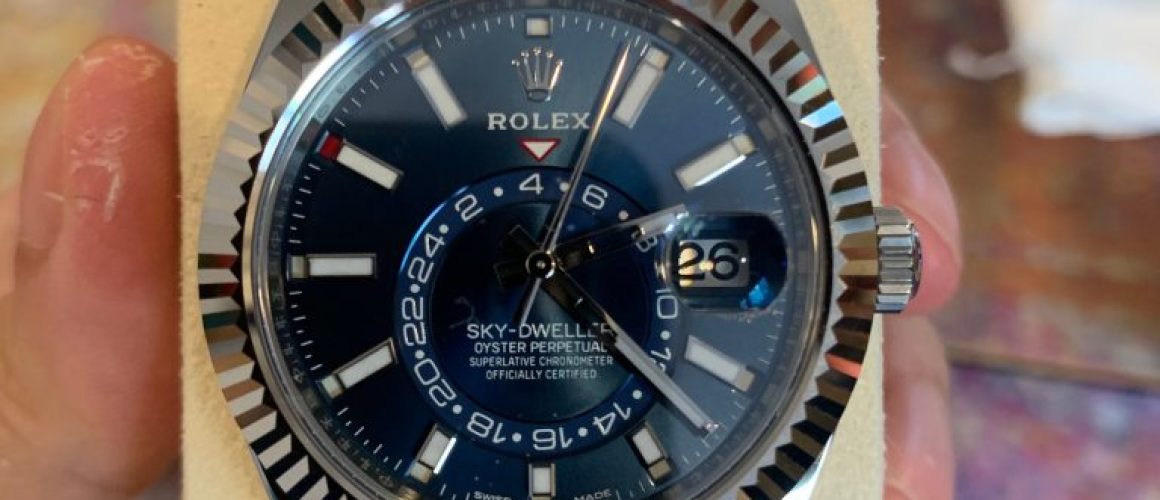Rolex Skydweller Black Dial Review 326934
The Sky-Dweller has always had a slightly contradictory character. It’s the most complicated watch Rolex makes (in terms of mechanical complexity, it’s only rivaled by the Yacht-Master II) and when it was introduced in 2012, it was only available in precious metals. At the same time, it’s clearly intended to be an extremely practical watch – durable, easy to use, and easy to live with, even under the stress of navigating the world’s increasingly unfriendly skies. However, in 2017, Rolex introduced two Rolesor versions of the Sky-Dweller (Rolesor is the company’s term for its mixtures of steel with white or yellow gold) which immediately made this most practical of complicated watches, instantly more accessible. In Everose and on a strap, the Sky-Dweller is a $39,550 watch, and in white gold on a white gold bracelet it’s $48,850, which obviously makes precious metal versions of the Sky-Dweller as much statement pieces as anything else. (Jay-Z has been frequently spotted wearing a yellow gold Sky-Dweller, for example.) Though we’ve done A Week On The Wrist with a Sky-Dweller before, that was an Everose model on a strap and with the newer, less overtly luxurious models out, we thought this would be a good time to revisit the Sky-Dweller. The new version in steel, with a white gold bezel, is now the most affordable model, at less than half the price of the precious metal versions, and that’s the one we chose for our latest A Week On The Wrist.
